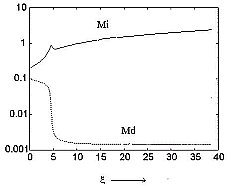|
Dusty Plasma
Dusty plasma is a collection of submicron size particles immersed in plasma containing electrons, ions and neutral atoms. Dust particles occur in various plasma environments ranging from inter-stellar medium to laboratory plasma devices. Planetary ring systems, interstellar clouds and tails of comets are some natural situations where dusts co-exist with plasmas. From the technological point of view, dusty plasmas occur in devices for industrial plasma deposition, etching, sputtering and in semiconductor processing industry.
Dust particles in plasmas are usually charge
carriers. They are many order of magnitude heavier than any other
plasma particles and they can have many orders of magnitude larger
(negative or positive) time-dependent charges. Dust particles
communicate nonelectromagnetic effects (gravity, drag and radiation
pressure) to the plasma that can represnt new free energy sources.
Their presence can influence the collective plasma behaviour, for
example, by altering wave modes and by triggering new instabilities.
 | 
Mach number profiles for dust affected sheath
|
At CPP we conduct theoretical, numerical and experimental investigations of various problems in dusty plasmas. Some of the theoretical and numerical research topics are:
- Solitary waves and double layers in dusty plasma.
- Sheath structures in a plasma containing dusts.
- Jeans instability of a dusty plasma.
- Various instabilities in dusty plasma.
|
